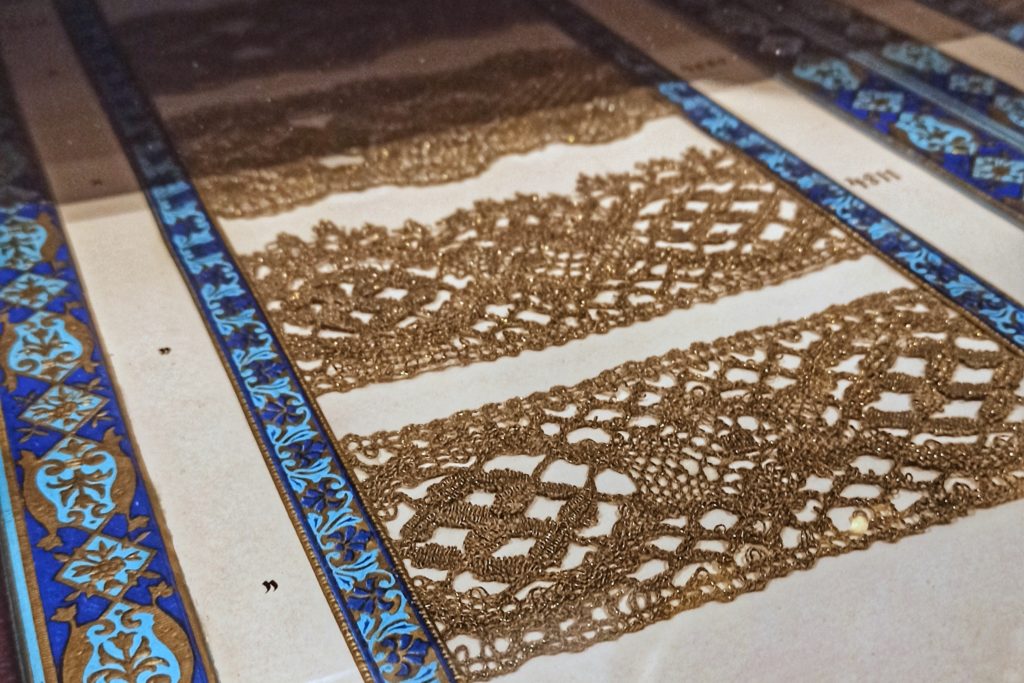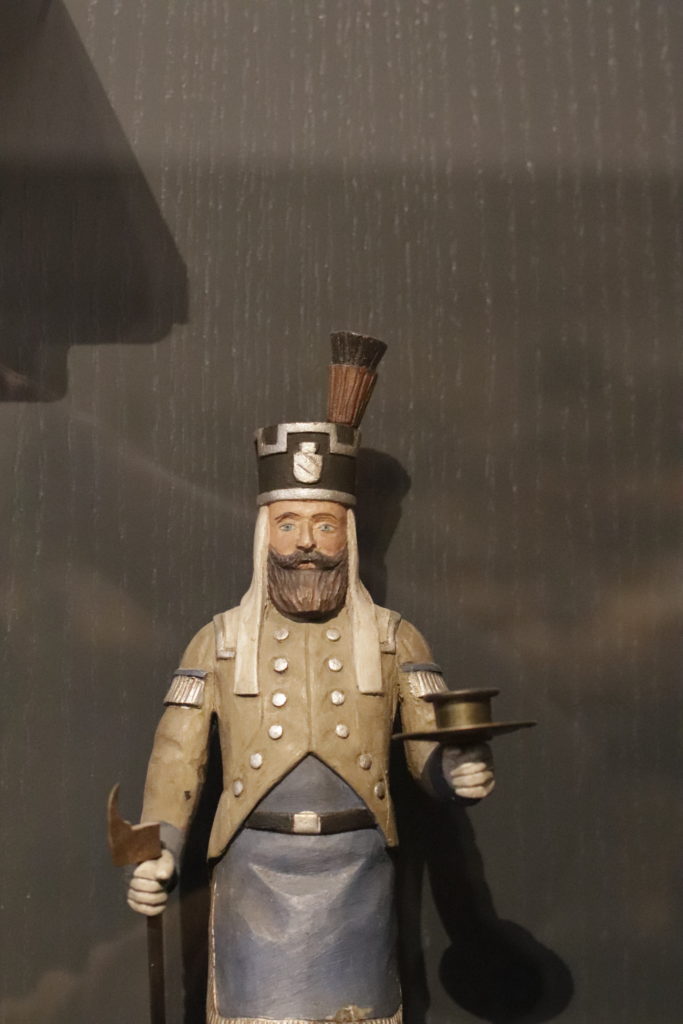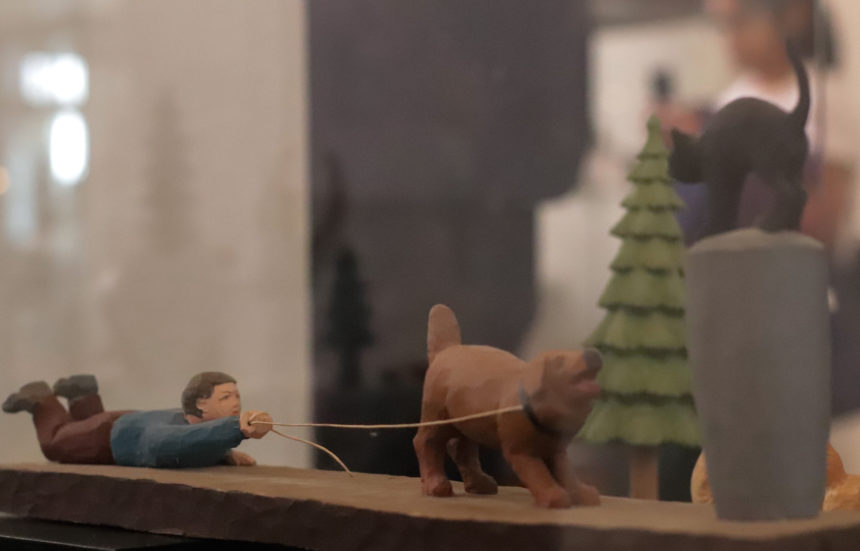Visiting the Ore Mountains, you can see how important mining was for the region and its economy.
But… mining (be that silver, tin, copper, zinc, or uranium) is not forever and when mining activity decreased in the region, another two industries developed.
A good way to discover this is by visiting the local museum or you can just take a look at the souvenir crafts shops.
One of these manufacturing activities was bobbin lacing, a kind of lace that may incorporate small strands of silver. According to oral tradition, bobbin lace was a technique introduced by a woman called Barbara Uthman, around the 16th century. And surrounding the regions of the Ore Mountains you can find different sculptures of this entrepreneur.
But… What is bobbin lace? It’s a lace technique made by braiding and twisting lengths of thread on bobbins (small pins, usually held in place on a cushion to determine the lace’s pattern), in German, Kloppelkissen.
Nowadays you will not see women sewing in the street, like in parts of Belgium, but during your trip around the Ore Mountains you will be able to see centuries old lace in museums and craft shops. A good souvenir; a little bit of history.

The second parallel industry is wooden toys. But before writing about these figurines, I would like to say that the timber industry has a long tradition in the mountains, as wooden pillars are the basis for the mining industry.
If you are visiting the region you will see the mining arches (link), or even the moving carousels in the museums, or the Christmas pyramids (Flügelpyramiden).
The wooden toy making of the Ore Mountains is one of the most important handicrafts from East Germany.
The most typical are animals, the Bergmannsfigur (a miner), Weihnachtsengel (Christmas angel) or a Räuchermann (the figure of a man with a pipe, the interior of which is hollow and used for burning incense creating the effect that the man is smoking).

To understand the importance of this kind of heritage it must first be understood that for over centuries the area of the Ore Mountains has been with little and poor agricultural activity. When the silver industry started to collapse, toy manufacturing became the main economic livelihood for many families. The creation of a toy was divided among several families: carving, painting, packing…. Then many of these toys were sold at Christmas markets in large cities.
These two manufacturing activities have coexisted with the mining industry and when it went into crisis, it ensured the survival of many families.
So whether you decide to buy a toy or some lace, you will be taking home a piece of the history of the Ore Mountains.
XXXXXXXXXXXXXXXXX